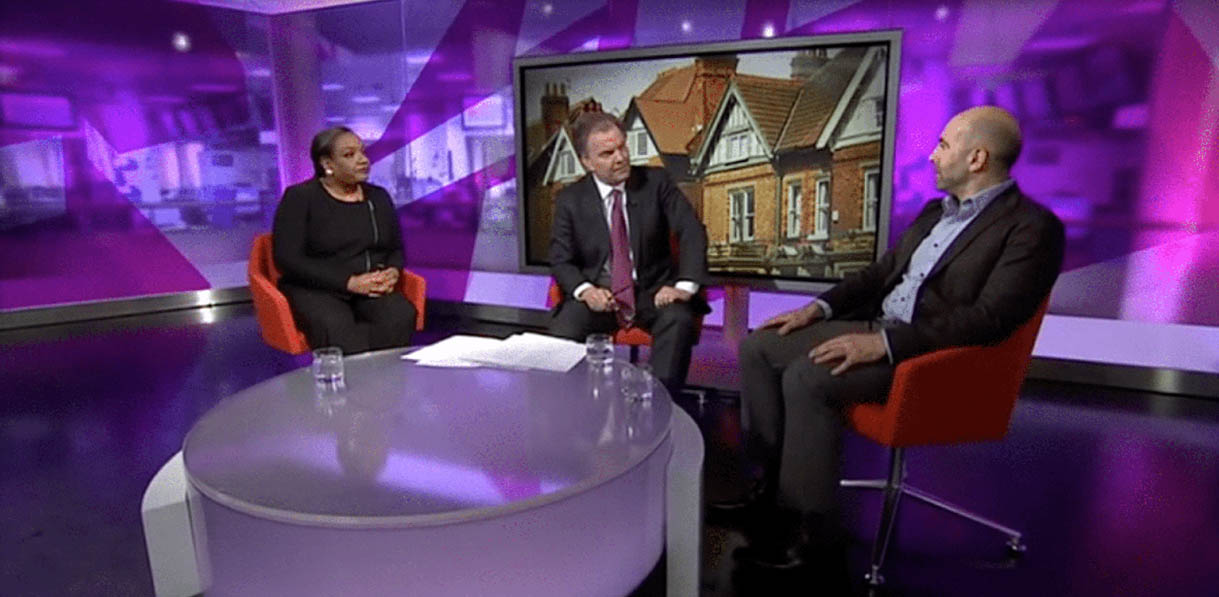The ironically named 2015 Deregulation Act brought us revisions to Section 8 and section 21 possession proceedings and deposit protection, plus measures to prevent retaliatory eviction. Since then, we have seen compulsory licensing and accreditation across Wales and a raft of provisions in the 2016 Housing & Planning Act including civil penalties, banning orders and the sharing of deposit protection data. You’ll have read acres of copy on tax changes and the regulation of buy to let mortgages since January 2017. Or have you? Research last year found that only 40% of landlords knew that the failure to provide tenants with the Government’s How To Rent guide could render a Section 21 notice invalid. Landlords are trying to stay abreast of the changes by joining associations, membership at the NLA is up by 30% over the past three years.
So what’s coming down the tracks over the next 12 months? The first thing to note is that some proposed changes could well be shelved. Brexit is stealing the limelight and leaving government with little time to draft yet more regulation for the PRS. Extending the scope of mandatory HMO licensing was due to be implemented from April or October 2017 but there has been no update from the government on this. Currently all properties with 5 or more people living in two or more households over three or more stories are classed as an HMO. Under the new proposals, the storey criteria was to be removed and all flats above and below business premises were to be brought in scope. Additional HMO licenses where such schemes exist were to be passported into the mandatory licensing scheme.
Where I have four sharers in one house, I have warned tenants that they must not move a fifth person in as this would trigger the need for a costly and burdensome HMO license. My main beef with the definition of an HMO, old or new, is that it does not differentiate between 3 or 4 sharers on one AST effectively living as a family and people living in lockable rooms with anonymous communal areas. These are two totally different management propositions. In another property, two related couples sharing a house have asked to move a friend in, but because it’s a three story house I can’t let them. If the person were related to them it would be permissible, which shows how absurd the rules are. For now the removal of the storey criteria has been shelved, but watch out as the proposal may regain momentum.
The government announced on 13 July 2017 that the introduction of making tax digital would also be postponed – another sigh of relief. In previous plans, all landlords with a turnover of £10,000 or more were to make digital quarterly tax returns using prescribed software from April 2018. The good news is that only businesses with a turnover more than the VAT threshold – currently £85,000 – will be required to complete tax returns digitally from April 2019 and only for VAT. Landlords with a turnover above or below the threshold can voluntarily opt in for processing of other taxation but there will be no obligation until April 2020 at the earliest. Unincorporated property businesses with a turnover of less than £10,000 are exempt. It is widely acknowledged that the government has a patchy record with IT implementation, so many expect mandatory digital taxation for all to be several years away.
Other regulatory changes left floating are the so-called reform of sub-letting that would require landlords to “reasonably consider” tenants requests to sublet and proposals to re-design rent-a-room relief which allows homeowners to earn up to £7,500 from lodgers, tax free. We also await news on mandatory electrical safety checks, a new streamlined abandonment procedure and compulsory client money protection for lettings agents and landlords. When and whether these will still happen remains a mystery.
Moving on to proposals that appear to be current and active, the Queens speech contained plans for a draft bill banning letting agent fees in England. The Welsh government has also begun consultation on banning fees, already outlawed in Scotland since 2012. I think there is some common ground here between tenants and landlords who argue that if they are already paying a typical 8-15% of the annual rental contract to the agent, why should the tenant have to pay, particularly where good quality tenancy agreements are freely available. The most convincing argument to retain some fees is the cost of referencing, especially if a tenant makes multiple offers through various agents. Currently tenants will tend to make just one serious offer to avoid unnecessary charges. I think refundable holding fees are also a useful and reasonable ask, enabling the agent or landlord to stop marketing the property whilst the tenant is referenced.
The other measure in the Queens Speech which wins this year’s rabbit out of the hat award (so far) is the proposal to cap deposits payable by tenants at one month. This neat measurement makes landlords and agents charging a 5 or 6 weeks deposit look greedy. But we all know the importance of taking more than one month’s deposit because psychologically this deters the tenant from simply not paying the last month’s rent. I hope the government sees sense on this, though it is likely that they see more votes in siding with the consumer. This surprise measure has stoked an interesting debate in the landlord community over the merits of taking a deposit, given the need to protect it, potentially acrimonious disputes and the withdrawal of rights to serve a section 21 if the landlord fails to provide the certificate and prescribed information to the tenant within 30 days of receiving the deposit. There are a number of insurance alternatives but as I understand it, they are generally only suitable for working tenants who have passed reference checks. On payment of a premium the insurance would pay out if there were any damage caused by the tenant beyond wear and tear and/or rent owed, subject to the terms of the insurance. The main argument against insurance is that the tenant does not have the same incentive to behave well in order to retrieve their lump sum at the end of the tenancy.
As was widely predicted, Edinburgh could become the first district in Scotland to introduce rent controls, following measures introduced in The Private Housing (Tenancies) Scotland Act 2016. Edinburgh City council has agreed “to call for a report on the steps that need to be taken to implement a city wide Rent Pressure Zone to limit increases in high rents in the private rented sector in the city.” Provisions in the act allow local authorities to apply for annual rent increases to be capped to CPI plus 1%, for example, for a five year period subject to approval by the Housing minister. New contracts would still commence at the market rent. Indexed rent increases were championed by Ed Milliband’s Labour party and continue to be supported by Shelter and other housing campaigners. The move feels political and dogmatic, politicians determined to put them into practice somewhere. In the past, NLA research informed us that around three quarters of landlords don’t intend to increase rents year on year. Rent increases are more commonly proposed by letting agents who do benefit from greater churn of tenants and higher commission.
If you’re feeling gloomy about forthcoming tax changes, spare a thought for Scottish landlords who face the loss of no fault eviction for new tenancies after December 2017. Tenants will in effect have the right to rent the property for life, unless the landlord’s reason to evict them complies with grounds specified by the 2016 act such as selling or refurbishing the property or rent arrears and crucially he or she can convince a judge. The grounds are similar to those used for Section 8 notices in England and Wales. When we rent properties, we are effectively handing the keys to our asset to a stranger, but at least we can still terminate the tenancy after 6 months In England and Wales if there are problems. I wouldn’t let a property knowing that the tenant has lifelong rights, it is just too onerous with repossession being reliant on the whim of a judge on the day should the matter end up in court. Expect lots of refurbishing of properties in Scotland to end tenancies in future.
The 2015 Energy Efficiency regulations will really start to bite in England & Wales on 1 April 2018. From that date, landlords will be prohibited from granting new tenancies with an EPC rating below E, including renewals and tenancies becoming statutorily periodic after the end of a fixed term. From 1 April 2020, this restriction will apply to all existing tenancies on domestic privately rented properties unless they are on the PRS Exemption Register. Your property could be exempt if improvements cannot be financed through the Green Deal, the tenant or a third party withholds consent or energy improvements would cause a depreciation in the value of the property of 5% or greater. I recommend you review all of your EPCs now and check they are E or above. In some cases the new boiler and loft insulation you installed since the last EPC was carried out could be enough to bring the property up a grade or two if you got a new EPC done now. For properties that are still graded F or G, decide whether they could be exempt or whether you will need to arrange improvements. The Government operated Exemptions Register opens on 1 October 2017.
If you have tried remortgaging recently or are one of an all time low 13% of landlords still planning to buy (NLA Research), you will have noticed a game changing shift in lending criteria for buy to let. The Prudential Regulation Authority has set a minimum stress test of 125% @ 5.5% for new mortgages. Lenders must also take account of tax changes and most have interpreted that to be a rate of 145% @ 5.5%. So the rent must cover 145% of the mortgage as if you were paying mortgage interest at 5.5%. If you are remortgaging without capital raising, a lower stress test of 125% @ 5.5% often applies. The best buy to let mortgage interest rates at the moment are around 1.39%. These absurdly high stress tests mean that many investors will struggle to qualify for mortgages of more than 60% LTV, particularly in London were rental yields of 4-5% are common.
If you’ve finished digesting that, the next change in buy to let lending is that investors with four or more mortgaged buy to let properties will be defined as portfolio landlords from 30 September 2017. Many lenders are being slow to respond. Broker Simon Allen tells me that only six lenders have so far declared whether they will continue to do business with landlords who fit into this new category – two of those have said they will not. The Mortgageworks (TMW), Aldermore, Paragon and Shawbrook are four lenders that have published new criteria. Applicants may have to provide a business plan, cashflow forecasts and asset and liability statements. Simon’s advice is “be prepared to provide more information, recognise your first choice lender may not be available and brush up on your excel skills.” I am reassured that TMW, as one of the biggest players, will allow portfolio landlords to have access to all of its products but like so many lenders they apply a stress test of 5.99% once you borrow £1million from them, so continue to spread your loans around a number of lenders, if that’s you. The mortgage market has literally become a maze for landlords, probably good news for reputable brokers like Simon and alternative sources like crowdfunding.
Finally, a look at unknowns potentially on the horizon. The appalling catastrophe that occurred at Grenfell tower has prompted the government to announce a review of building and fire regulations. Although Grenfell has shifted the focus to social housing, Chris Norris, Head of Policy at the NLA thinks that any changes on fire safety will be cross tenure, affecting rented properties whatever the sector. Some private sector buildings have identified their external cladding and insulation combination to be the same as that used in Grenfell. Expect some controversy over who should pay for works to replace them given that many will have been signed off by building control. We are already seeing local authority freeholders take a tough stance with leaseholders over fire safety issues. In a recent case in Croydon, a leaseholder was told she must allow the council as freeholder access to her flat to enforce fire regulations. Given a high proportion of fires are caused by electrical distribution and appliances, 5 yearly safety checks on wiring already proposed for the PRS (and in force in Scotland) seems to be the way forward. Amongst other possible changes could be mains powered smoke alarms not just battery operated becoming compulsory.
I’ll end with our old friend London Borough of Newham, which is awaiting the Secretary of State’s decision on whether to renew borough wide licensing for a further five years. The East London council, whose current five year scheme ends in December, has adopted the high risk strategy of assuming that it will get approval by September ready for applications to open in October 2017. It is thought that a refusal from the Secretary of State might result in a judicial review application from Newham. The scheme’s fate probably lies in the hands of Alok Sharma, the sixth housing minister since 2010, who has a finance background and is a chartered accountant. Whether a Conservative minister will succumb to the wishes of a flagship Labour controlled council is of course questionable, although senior council officers seem swaggeringly confident that recent events in Grenfell help point the way towards stronger regulation of this type. If successful, Newham will be the first council to successfully introduce a borough wide selective licensing scheme since 2015, when NLA lobbying helped usher in new regulations to restrict schemes to 20% of a borough’s area or PRS stock, unless approved by ministers.









